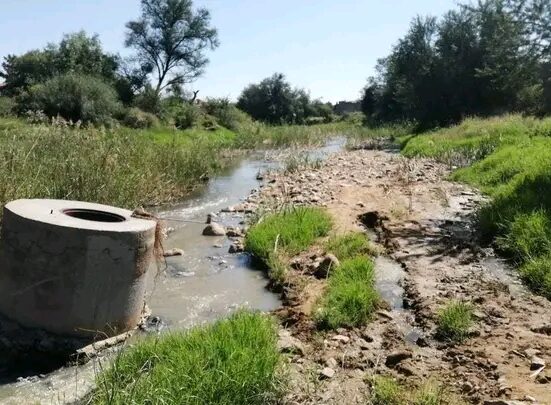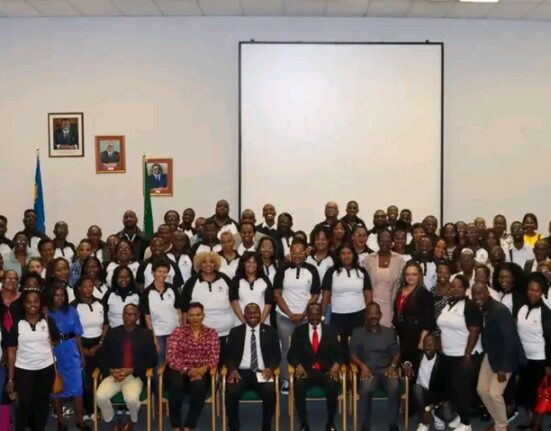Namibia, a vast and diverse country located in Southern Africa, is known for its breathtaking landscapes, unique wildlife, and rich cultural heritage. From the towering sand dunes of the Namib Desert to the lush wetlands of the Okavango Delta, Namibia’s natural beauty is unparalleled. However, beyond its awe-inspiring scenery, Namibia has also earned international acclaim for its innovative and successful approach to conservation. One of the key pillars of Namibia’s conservation efforts has been the development and promotion of ecotourism—a sustainable form of tourism that benefits both the environment and local communities.
In this extensive article, we will explore the critical role of ecotourism in Namibia’s conservation strategies, examining how this industry has contributed to the protection of the country’s natural resources, supported wildlife conservation, and empowered local communities. We will also delve into the challenges and opportunities associated with ecotourism in Namibia and look at how this model could be replicated in other regions.
1. Understanding Ecotourism: Principles and Impact
Ecotourism is a type of responsible travel that focuses on experiencing natural environments while promoting sustainability, conservation, and respect for local cultures. It aims to minimize the negative environmental impacts of tourism, while generating economic benefits for local communities and contributing to the preservation of biodiversity. Ecotourism seeks to balance environmental protection with economic growth, ensuring that tourism does not degrade the very ecosystems it aims to showcase.
The key principles of ecotourism include:
- Conservation of natural resources: Ecotourism promotes the protection and sustainable management of natural areas, including wildlife, ecosystems, and landscapes.
- Economic benefits to local communities: Ecotourism encourages the involvement of local communities in tourism activities, providing them with sustainable income through jobs, small businesses, and cultural exchanges.
- Educational value: Ecotourism encourages tourists to learn about the environment, local cultures, and conservation issues, fostering greater awareness and respect for nature.
- Minimizing environmental impact: Ecotourism strives to minimize the negative impacts of tourism, such as waste generation, habitat disruption, and carbon emissions, while promoting low-impact practices.
2. Namibia’s Commitment to Conservation
Namibia has long recognized the importance of protecting its natural environment, particularly its unique ecosystems and rich biodiversity. The country is home to some of the most iconic wildlife in Africa, including elephants, rhinos, lions, cheetahs, and desert-adapted species like the oryx and springbok. Namibia is also known for its distinctive landscapes, from the arid Namib Desert to the wetlands of the Zambezi River region.
However, like many African nations, Namibia faced significant challenges in wildlife conservation during the 20th century, including habitat loss, poaching, and human-wildlife conflict. In response to these challenges, Namibia took bold and innovative steps to conserve its wildlife and natural resources. One of the country’s most groundbreaking initiatives was the introduction of communal conservancies in the early 1990s.
The Concept of Communal Conservancies
Communal conservancies are a key component of Namibia’s conservation strategy. These conservancies are community-managed areas where local people have the legal rights to manage natural resources, including wildlife, and benefit financially from their conservation efforts. The conservancies allow communities to make decisions about land use and conservation practices, and they encourage sustainable tourism practices that generate income and employment.
The introduction of communal conservancies has empowered local communities to actively participate in conservation and has created a direct link between conservation and economic incentives. By engaging local people in the management of wildlife and natural resources, Namibia has created a model of conservation that benefits both the environment and the people who live in these areas.
3. Ecotourism as a Catalyst for Conservation in Namibia
Ecotourism has played a crucial role in the success of Namibia’s conservation efforts, particularly through the support of communal conservancies. The development of ecotourism in these conservancies has helped raise funds for conservation projects, provided jobs for local communities, and fostered a culture of environmental stewardship.
Economic Benefits and Employment Opportunities
The most direct impact of ecotourism in Namibia has been its contribution to the country’s economy and the creation of jobs. The tourism sector in Namibia is a significant contributor to the national economy, generating revenue from visitors who come to experience the country’s natural wonders and wildlife. Ecotourism in communal conservancies creates employment opportunities for local people, from guides and trackers to lodge staff and artisans selling crafts.
For example, conservancies like the Torra Conservancy in the Damaraland region have attracted tourists eager to see the desert-adapted elephants and other wildlife. The income generated from tourism provides financial benefits to the community and is reinvested in conservation efforts, such as anti-poaching programs, wildlife monitoring, and infrastructure development. As a result, local communities have a vested interest in protecting their natural resources and ensuring that wildlife thrives.
In addition to providing direct employment, ecotourism has also supported the growth of small businesses in local communities, including hospitality services, transport, and food production. This creates a ripple effect throughout the local economy, benefiting a wide range of stakeholders.
Wildlife Conservation and Habitat Protection
Ecotourism has been a powerful tool for protecting Namibia’s wildlife and natural habitats. By generating revenue from wildlife tourism, conservancies can fund essential conservation activities, such as habitat restoration, wildlife monitoring, and anti-poaching measures. In regions like Etosha National Park and Skeleton Coast, ecotourism has been instrumental in generating income that supports the protection of key wildlife species, including endangered species like black rhinos and cheetahs.
For example, the Desert Lion Conservation project in the Kunene Region relies on ecotourism revenue to fund the protection of desert-adapted lions. The revenue from tourism helps pay for collaring and tracking the lions, as well as monitoring their movements to minimize human-wildlife conflict. This program also provides financial support to local communities to foster coexistence with wildlife, reducing the likelihood of lions preying on livestock.
In other areas, ecotourism has helped protect fragile ecosystems, such as the Namib Desert, which is home to unique plant species and desert-adapted wildlife. Tourists visiting these areas contribute to the funding of conservation programs, ensuring that the desert ecosystem is preserved for future generations.
Conservation Education and Advocacy
Ecotourism in Namibia also plays a vital role in raising awareness about conservation issues and educating visitors about the importance of protecting wildlife and natural ecosystems. Many ecotourism operators in Namibia offer educational experiences, such as guided tours, wildlife watching, and environmental education programs, that help tourists understand the challenges facing Namibia’s wildlife and natural resources.
By promoting responsible tourism practices, such as staying in eco-friendly accommodations, respecting wildlife, and minimizing waste, ecotourism helps instill a conservation mindset in visitors. Tourists who experience Namibia’s wilderness firsthand often become advocates for the country’s conservation efforts, sharing their knowledge and enthusiasm with others and helping raise global awareness about the importance of preserving Namibia’s natural heritage.
4. Challenges of Ecotourism in Namibia
While ecotourism has brought significant benefits to Namibia’s conservation efforts, there are also challenges associated with this industry. Some of the key challenges include:
Over-tourism and Environmental Impact
While Namibia is known for its low-density tourism, there is always the risk of over-tourism, particularly in popular areas such as Sossusvlei and Etosha National Park. Over-tourism can lead to environmental degradation, including damage to ecosystems, wildlife disturbance, and increased waste generation. Sustainable tourism practices must be carefully managed to prevent these negative impacts from undermining conservation efforts.
Community Capacity and Training
The success of ecotourism relies on the active participation of local communities. However, in some areas, there may be a lack of capacity or training among local communities to fully engage in ecotourism initiatives. This can lead to missed opportunities for economic growth and conservation impact. Ensuring that local communities receive the necessary training and support is essential for the long-term success of ecotourism projects.
Dependence on Tourism Revenue
While ecotourism provides significant financial benefits, it also creates a reliance on tourism revenue. External factors such as political instability, economic downturns, or global crises (such as the COVID-19 pandemic) can have a significant impact on tourism demand, threatening the sustainability of conservation funding. Diversifying income sources and exploring additional funding mechanisms for conservation are important strategies for reducing this dependency.
5. The Future of Ecotourism in Namibia
The future of ecotourism in Namibia looks promising, with ongoing efforts to expand and refine the industry. As global demand for sustainable travel continues to grow, Namibia is well-positioned to attract more visitors who are interested in responsible tourism practices. The continued success of communal conservancies, coupled with the expansion of eco-friendly infrastructure, will ensure that ecotourism remains a key driver of conservation and economic development in Namibia.
To build on this success, Namibia will need to continue investing in conservation education, capacity building for local communities, and sustainable tourism practices. By doing so, the country can maintain its position as a leader in ecotourism and conservation, ensuring that its rich biodiversity and natural landscapes are preserved for generations to come.
Ecotourism has proven to be a powerful tool in Namibia’s conservation efforts, providing both environmental and economic benefits. Through the development of communal conservancies and responsible tourism practices, Namibia has demonstrated that conservation and tourism can go hand in hand, benefiting local communities while protecting the country’s unique wildlife and ecosystems. As Namibia continues to refine and expand its ecotourism industry, it offers a valuable model for other countries seeking to integrate sustainable tourism into their conservation strategies.













